Diesel exhaust particles distort lung epithelial progenitors and their fibroblast niche
Xinhui Wu , Chiara Ciminieri , I Sophie T Bos , Manon E Woest , Angela D’Ambrosi , René Wardenaar , Diana C J Spierings , Melanie Königshoff , Martina Schmidt , Loes E M Kistemaker , Reinoud Gosens
Environ Pollut. 18 april 2022
Publication: https://pubmed.ncbi.nlm.nih.gov/35439594/
Abstract
Chronic obstructive pulmonary disease (COPD) is a progressive lung disease characterized by inflammation and impaired tissue regeneration, and is reported as the fourth leading cause of death worldwide by the Centers for Disease Control and Prevention (CDC). Environmental pollution and specifically motor vehicle emissions are known to play a role in the pathogenesis of COPD, but little is still known about the molecular mechanisms that are altered following diesel exhaust particles (DEP) exposure. Here we used lung organoids derived from co-culture of alveolar epithelial progenitors and fibroblasts to investigate the effect of DEP on the epithelial-mesenchymal signaling niche in the distal lung, which is essential for tissue repair. We found that DEP treatment impaired the number as well as the average diameter of both airway and alveolar type of lung organoids. Bulk RNA-sequencing of re-sorted epithelial cells and fibroblasts following organoid co-culture shows that the Nrf2 pathway, which regulates antioxidants’ activity, was upregulated in both cell populations in response to DEP; and WNT/β-catenin signaling, which is essential to promote epithelial repair, was downregulated in DEP-exposed epithelial cells. We show that pharmacological treatment with anti-oxidant agents such as N-acetyl cysteine (NAC) or Mitoquinone mesylate (MitoQ) reversed the effect of DEP on organoids growth. Additionally, a WNT/β-catenin activator (CHIR99021) successfully restored WNT signaling and promoted organoid growth upon DEP exposure. We propose that targeting oxidative stress and specific signaling pathways affected by DEP in the distal lung may represent a strategy to restore tissue repair in COPD.


